
Simple Formula To 1000% Mobile App Growth Acceleration

Launching an app is a major undertaking, but the work certainly doesn’t stop the moment that it hits the market. Your mobile app growth plan is up against hundreds of thousands of competitors.
Table of Contents
-
-
- The Truth About Accelerating Mobile App Growth
- Why Isn’t Your Mobile App Business Growing?
- Here’s The Background To The Problem
-
- Hindrance #1: The Do-It-All Approach
-
- Here’s The Background To The Problem
- The Basic Trick To Accelerating Mobile App Growth By 1000%
- Here’s The Solution To The Problem
-
- Case Example – Burbn vs Instagram
-
- Here’s The Solution To The Problem
- Two Principles To Keep In Mind When Applying The Mobile App Growth Formula
- Principle #1: Delegate To The “Who”
- Principle #2: Work Only With The Best
- Key Takeaways
-
Nowadays, mobile app developers argue that driving mobile app growth is the most challenging phase in the mobile application lifecycle.
That even the once seemingly complex mobile development process has been dwarfed by the increasingly draining mobile app growth campaigns.
You see, while mobile app development is admittedly a very technical process, app developers argue that it’s not even half as demanding as running mobile app growth campaigns. Mobile app development follows static and straightforward methodologies, whereas mobile app growth campaigns are influenced by exceedingly dynamic market parameters.
That’s why, as they’ve noticed, the two biggest App Stores are now publishing more than 5,000 mobile apps per day, but only 0.1% of the apps ultimately manage to hack their growth beyond 5 million downloads.
Sounds relatable?
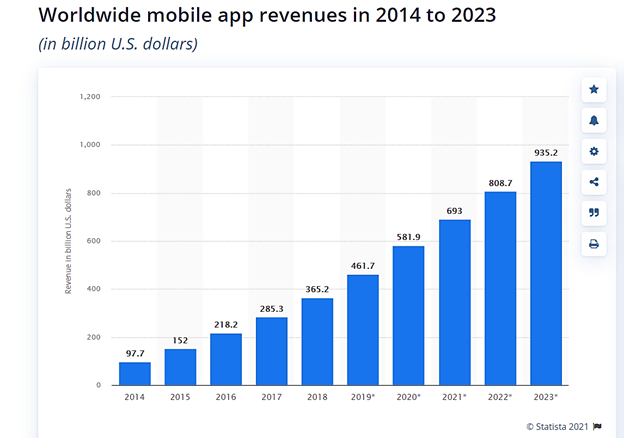
Ok, what if I told you that there’s nothing super special about those mobile apps in the top 0.1%?
The truth is, you can accelerate your mobile app growth just as much by applying one very basic formula.
The Truth About Accelerating Mobile App Growth
For over 10 years now, the team at PreApps has been managing digital marketing campaigns for mobile app developers and owners across a wide range of mobile devices and app categories – mobile games, lifestyle apps, educational apps, crypto apps, social apps, Android native apps, iOS native apps, you name it.
Overall, we’ve had the pleasure of planning and handling campaigns for more than 3,300 mobile apps – to the point of pushing their cumulative app download numbers beyond half a billion and counting.
Now, from the numerous mobile app marketing strategies we’ve tried out all along the journey, I can confirm that there’s really no single promotion recipe for mobile app success.
But then get this – although the development and marketing tactics tend to differ extensively from one mobile app to another, the most successful players have been observed to maintain this one formula when it comes to driving mobile app growth.
This is the same concept we’ve seen even our clients leverage to grow their app download numbers tenfold. As such, I like to think of it as the ultimate mobile app growth acceleration principle.
Interestingly, it turns out that while the leading mobile apps seem to recognize the formula and understand how it works – other types of apps completely miss the main idea or happen to get everything wrong. I guess that explains why many mobile app developers tend to struggle with mobile app growth acceleration.
I’ll tell you what, though. Your mobile app’s prospects are about to change for the better.
I’m going to walk you through this ultimate secret, hoping that it’ll get you started on your 1000% mobile app growth acceleration journey.
Take it from me, once you begin incorporating the formula into your app business and development cycle, you’ll have a solid foundation for launching campaigns that could transform your mobile app into a million-dollar-plus business.
And with that said, let’s start with the basics. Why are mobile applications failing in the first place?
Why Isn’t Your Mobile App Business Growing?
Here’s The Background To The Problem
Before we dig into the business-changing concept, I wanted to talk about one of the principal mistakes that I see most app developers making – pertaining to mobile app growth acceleration. This is what continues to largely hold back their growth capabilities.
Hindrance #1: The Do-It-All Approach
Here are a couple of questions that you might want to ask yourself:
- Which part of the app development lifecycle are you spending most of your time on?
- What types of app-related problems have you been trying to solve lately?
- What app-related projects are you spending most of your time on?
- Are those projects directly earning you money or perhaps helping you grow the mobile app?
Running a mobile app business isn’t just about building, launching, and promoting a mobile app. Rather, it’s an intricate web of tasks that fit into these seven stages of the mobile app development lifecycle:
- Planning
- Mobile app design.
- Mobile app development.
- Mobile app testing.
- Mobile app launch.
- Mobile app marketing.
- Mobile app maintenance.
The biggest mistake app business owners make here – particularly beginners and small enterprises – is trying to do it all by themselves. For the first three to nine months, they proceed from planning and design to development, testing, and App Store deployment – before single-handedly embarking on mobile app marketing and app maintenance.
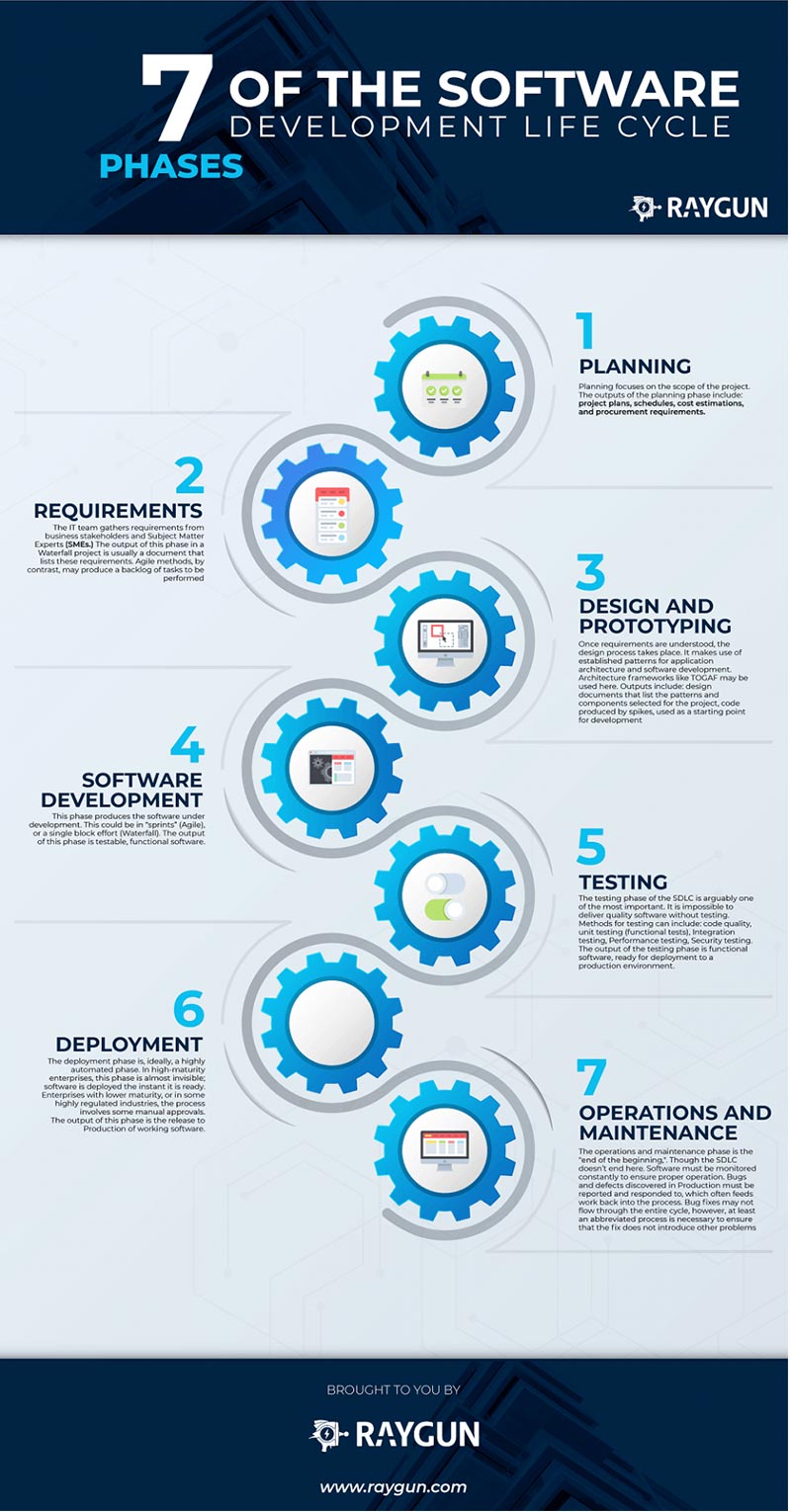
This is something I struggled with too – because, as entrepreneurs, we’re naturally wired to try and figure everything out on our own.
I remember, for instance, when I launched my first mobile app, DrinkTV, over 10 years ago.
At that time, I was obsessed with taking care of everything single-handedly. I was always the one trying to fix things whenever there was a problem with development, while simultaneously taking charge of the mobile app marketing campaigns.
The going wasn’t that smooth, though. And neither was the business growth. The whole process of consistently switching between development, marketing, and maintenance was getting more and more overwhelming with time – leaving me with barely any opportunity for driving mobile app growth.
Thankfully, a mentor came to my rescue right when I was about to drown and give it all up. This was the time I came to learn about the “Entrepreneurial Bottleneck”- through which I was made to understand that the biggest constraint to any company’s growth and potential is the business owner.
I had to acknowledge that wearing multiple hats had turned me into the bottleneck of my mobile app business.
Take a moment to think about it. As the app developer and owner, the buck stops with you. That means you can only blame yourself for making poor decisions.
And while there’s a lot that goes into sustaining a mobile app business, its success ultimately comes down to how you choose to approach the whole mobile app development lifecycle.
Now’s the time to accept that if you’re the business owner or CEO and you happen to spend your day-to-day work hours on both tactical marketing or development initiatives, you are the bottleneck that’s stopping your mobile app growth. As such, you risk losing it all by trying to handle it all by yourself.
You should, instead, seek to use leverage to propel your mobile app forward in ways that you can’t grow on your own. In other words, as the mobile app owner or CEO, you need to work on the business, not in the business.

Think about it – do you think Mark Zuckerberg is still writing code?
Of course, not. You can bet he hasn’t written a line of code for years now, since he’s backed by a team of carefully selected programmers.
Here’s another case example – would you say that the CEO of Uber is driving around picking up riders in his free time?
Don’t get it all wrong, though. I’m not advising you to throw caution to the wind. It’s completely natural for an entrepreneur’s brain to keep seeking solutions to business problems. The thing is that while you’re at it, you ought to consider reorganizing and assigning the tasks as follows…
The Basic Trick To Accelerating Mobile App Growth By 1000%
Here’s The Solution To The Problem
Mobile app owners tend to get emotionally invested in their growth objective – whether it’s getting 10,000, 100,000, or a million app downloads. While this is acceptable, it can all quickly turn into major frustrations if you insist on juggling between the growth campaigns and mobile app development.
Eventually, you might find yourself increasingly forfeiting the tasks or possibly even dropping on the whole mobile app project.
Now, to avoid such an unfortunate outcome, you ought to keep in mind that growing even the simplest instant app is going to take capabilities that are possibly greater than what you currently have.
And what is that all about?
Well, the simple trick to accelerating mobile app growth can be summarized as follows – instead of directing all your attention and resources to running the mobile app business single-handedly, you should ask yourself:
- Who is the best person to spearhead the mobile app growth campaigns on your behalf?
- Who has the skills, experience, and resources to increase your mobile app growth?
- Who could possibly align your mobile promotion campaigns with your app development goals?

The reality is that you’re not supposed to do it all. Instead, your job is to come up with the mobile app growth goals, and then leave the rest to well-specialized personnel. So, in other words, you have to get yourself an expert team with the right talents and capabilities to complete the necessary goals.
This simple formula was made popular by the legendary business coach Dan Sullivan. His philosophy states that focusing on the problem – which is the “How” – ultimately leads to frustration and fatigue.
He advises entrepreneurs to alternatively consider all the “Who’s” that could come in and supplement their efforts. At least then, you get to not only boost your motivation but also increase the chances of achieving your growth goals.
Case Example – Burbn vs Instagram
Let me tell you a story of how the first-ever billion-dollar app came to be. Have you ever heard of Burbn?
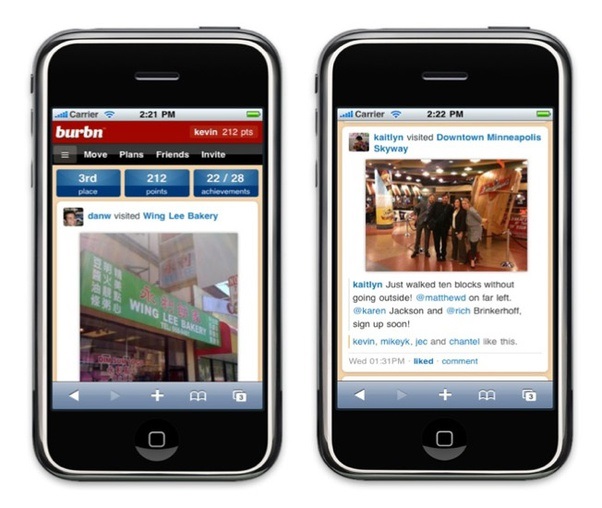
In 2010, a software engineer named Kevin had the idea for a photo-sharing, check-in app, called Burbn.
At that time, location check-in apps like Foursquare were dominating the market behind social media giants such as Facebook. And so, to capitalize on the high demand, Burbn was originally designed as a location-centered social network meant to compete with both Foursquare and social media sites.
The mobile app basically allowed users to check-in at various locations, post pictures of their meet-ups with friends, as well as earn points for spending time with friends.
This whole idea, in fact, was exciting enough to earn Kevin $500,000 in funding from two prestigious venture capital firms – Baseline Ventures and Andreessen Horowitz.
Sadly, however, the mobile app didn’t quite live up to all that hype. It turned out to be a major flop once it launched.
The few mobile users who tried it out complained that the app was too clunky. Plus, it was not intuitive enough due to its poorly designed user interface.
This outcome was, of course, pretty discouraging for the development team. Despite securing half a million dollars in funding, Kevin had failed to piece together a stable mobile app.
The experience didn’t break his spirit, though. He, instead, learned a very important lesson from the failure. His biggest shortcoming had been the do-it-all approach – he had tried to handle the whole mobile app design and development tasks on his own, thereby limiting his capabilities.
Once he realized the weakness, he chose not to worry about “how to fix the problem” or “how to secure more app downloads”. He, instead, asked himself “who is capable of fixing this”.
For Kevin, his “who” was Mike Krieger, a well-experienced software engineer who had previously worked at Meebo, a popular instant messaging app at the time.
With Mike’s help, the two were able to work out what users liked and disliked about their app. They discovered that the features that mobile users enjoyed the most were sharing and editing pictures. In particular, the app’s users liked enhancing their photos with Burbn’s simple, beautiful filters.
And so, with that in mind, the mobile app development team decided to rework the features based on user feedback. This is when they developed a second version that, unlike the previous one, happened to prioritize the photo-sharing capabilities.
Burbn was stripped of all the extra features and, subsequently, left with three core functionalities – photo sharing, photo filters, and a like button. This is what was ultimately relaunched under a new app name – Instagram.
And the rest, as they say, is history. Instagram quickly grew to become the first-ever billion-dollar app, before its acquisition by Facebook.
All that because Kevin dropped the question of “How” to focus on “Who”. Instagram would, otherwise, not be existing today.
Similarly, I encourage you to remove yourself from the bottleneck of your business. Your job as an app owner is to focus on the core management duties – such as deploying app updates, executing the overall vision, raising capital, and coordinating resources.
To achieve your mobile app growth goals, you ought to figure out “who” the best people are for every activity that goes beyond your personal capabilities.
You could, for instance, hire a mobile app developer to improve the overall user experience by fixing all the UX bugs, or maybe bring in an app marketing team to help you achieve the desired app download volume.
All in all, you might want to follow these two strategies for the best possible outcome in the long run.
2 Principles To Keep In Mind When Applying The Mobile App Growth Formula
Principle #1: Delegate To The “Who”
As mobile app owners, we get stuck when we focus too much on the intricacies of every single operation. But, you don’t need to do it all on your own, and the good news is that you aren’t meant to. You must figure out the “what” to do, and “why” you need to do it, but not the “how”.
Everyone wastes so much time and energy trying to figure out the “how” – strategies or tactics. Once you know the “what” and the “why” you can skip the “how”. The goal as a business owner is to delegate once you identify and find others to solve your problems.

Consider, for instance, that on average, it takes a total of nearly 270 hours to develop, test, design, and launch a mobile app – complete with an accelerated mobile page microsite. If you are doing all that on your own, you would need to spend over 11 days straight working on your mobile app, without taking a single break.
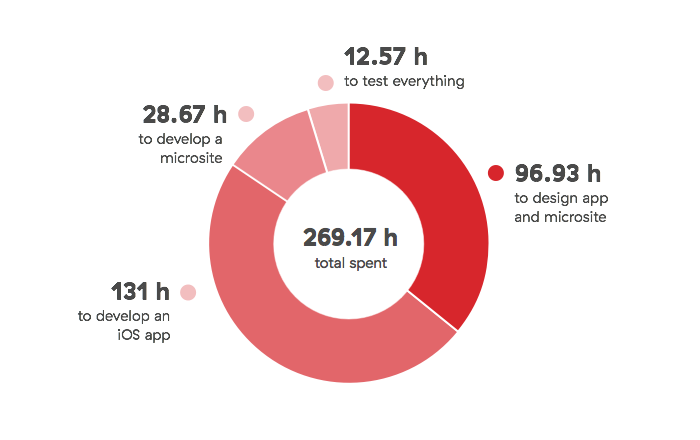
Even after hiring helpers, you should still try to review the delegated roles every now and then to keep everything perfectly streamlined. This reduces the chances of role clashes, or maybe inconsistencies that may compromise your mobile app growth.
As the volume of mobile users expands, for instance, you might want to sufficiently supplement your team to handle the growing demands.
Fair enough. But then again, wouldn’t all that extra human resource be costly to small mobile applications?
Okay, that’s a valid concern, I must admit. Initially, I was also very worried about the cost implications that come with such restructures. Only large app development enterprises and heavily funded mobile app projects perceivably have the resources to freely upscale their technical expertise.
Well, it might seem so, but that’s not always the case. You see, the thing is, the “who” isn’t always an employee. In many cases, it’s far cheaper and more effective for small startups to outsource the extra tasks to third-party agencies.
By partnering with an agency, you can get multiple experts working with you at a fraction of the cost of hiring a full-time employee. What’s more, such arrangements are usually on a contractual basis, thus saving you the legal liabilities that come with in-house hires.
Now, that’s precisely where we come in. As a leading mobile app marketing agency, PreApps has a team of seasoned app promotion experts on standby to help you attain your growth plans.
Principle #2: Work Only With The Best
Don’t just settle for any helper – surround yourself exclusively with A-list professionals.
And make no mistake about it. The best-qualified individuals and agencies aren’t always as costly as many believe. Even with a low budget, you can secure an adequately skilled team that you can depend on for the long haul.
The thing to understand here is that your mobile app growth will only be as successful as the team and experts that you surround yourself with.

Don’t be misled to work with amateurs that come with limited experience because they seem cheaper. This could substantially jeopardize the success of your app.
You could, on the contrary, try scouting for potential candidates across popular freelance app development sites. You just need to post a detailed job description and various prospective developers will reach out to you with their bids. At least then you should be able to make your selections based on their qualifications, credentials, past reviews, and field experience.
Then when you finally hire someone, resist the urge to micro-manage them. What’s important is to actually give your hires ownership of the problem for them to solve it, and let them do their work. Besides, employers rarely get screwed by developers when they conduct due diligence when hiring.
Consider, for instance, following this example laid by, yet again, Kevin, the co-founder and CEO of Instagram. Seeking to optimize Instagram’s user experience, he reached out to a technology engineer named Aza Raskin.
This turned out to be one of Instagram’s best moves as it’s Raskin who invented the endless scroll feature on the app’s news feed. He made a simple edit by removing the initial click-to-scroll button.
As a result of this new feature, Instagram increased its engagement quite significantly.
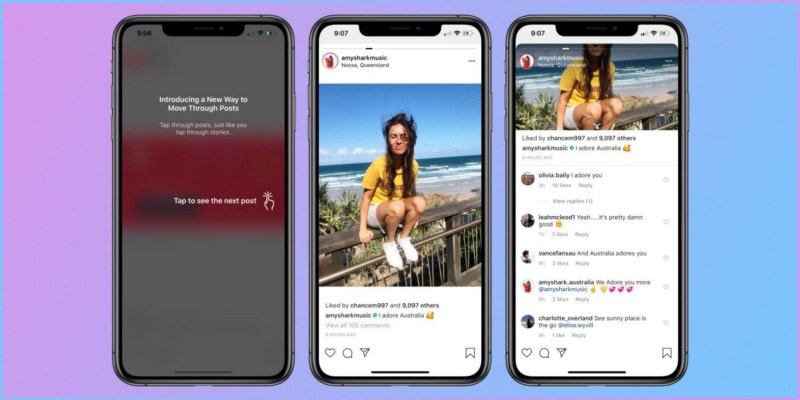
That said, we can agree that the success of this whole growth formula depends on how well you define your mobile app’s purpose, objectives, and value. Understanding this will help you find the best “Who’s” for the “How’s” required to achieve the defined goal. The “Who’s” can then take it from there by resolving the issues.
Key Takeaways
To sum it all up, here are the most crucial pointers that you should keep in mind:
- Mobile app development follows static and straightforward methodologies, whereas mobile app growth campaigns are influenced by exceedingly dynamic market parameters.
- The two biggest App Stores are now publishing more than 5,000 mobile apps per day, but only 0.1% of the apps ultimately manage to hack their growth beyond 5 million downloads.
- There’s really no single promotion recipe for mobile app success.
- While the leading mobile apps seem to recognize the app growth formula and understand how it works – other types of apps completely miss the main idea or happen to get everything wrong.
- Running a mobile app business is an intricate web of tasks that fit into these seven stages of the mobile app development lifecycle: Planning; Mobile app design; Mobile app development; Mobile app testing; Mobile app launch; Mobile app marketing; and Mobile app maintenance.
- The biggest mistake app business owners make here – particularly beginners and small enterprises – is trying to do it all by themselves.
- Wearing multiple hats turns you into the bottleneck of your mobile app business.
- While there’s a lot that goes into sustaining a mobile app business, its success ultimately comes down to how you choose to approach the whole mobile app development lifecycle.
- As the mobile app owner or CEO, you need to work on the business, not in the business.
- Your app goals can all quickly turn into major frustrations if you insist on juggling between the growth campaigns and mobile app development.
- Growing even the simplest instant app is going to take capabilities that are possibly greater than what you currently have.
- Instead of directing all your attention and resources to run the mobile app business single-handedly, you should ask yourself: “Who” is the best person to spearhead the mobile app growth campaigns on your behalf?
- Your job is to come up with the mobile app growth goals, and then leave the rest to well-specialized personnel.
- Dan Sullivan’s philosophy states that focusing on the problem – which is the “How” – ultimately leads to frustration and fatigue. He advises entrepreneurs to alternatively consider all the “Who’s” that could come in and supplement their efforts.
- Your job as an app owner is to focus on the core management duties – such as deploying app updates, executing the overall vision, raising capital, and coordinating resources.
- To achieve your mobile app growth goals, you ought to figure out “who” the best people are for every activity that goes beyond your personal capabilities.
- As mobile app owners, we get stuck when we focus too much on the intricacies of every single operation.
- On average, it takes a total of nearly 270 hours to develop, test, design, and launch a mobile app – complete with a microsite for accelerated mobile pages.
- Even after hiring helpers, you should still try to review the delegated roles every now and then to keep everything perfectly streamlined.
- The “who” isn’t always an employee. In many cases, it’s far cheaper and more effective for small startups to outsource the extra tasks to third-party agencies.
- By partnering with an agency, you can get multiple experts working with you at a fraction of the cost of hiring a full-time employee.
- Don’t just settle for any helper – surround yourself exclusively with A-list professionals.
- When you finally hire someone, resist the urge to micro-manage them. What’s important is to actually give your hires ownership of the problem for them to solve it, and let them do their work.
- The success of this whole growth formula depends on how well you define your mobile app’s purpose, objectives, and value. Understanding this will help you find the best “Who’s” for the “How’s” required to achieve the defined goal.
Over To You
When you’re of the mindset that you can achieve anything as long as you enroll the right people to help you do it, it lifts a huge mental burden off your shoulders.
The market opportunity is very much available and it’s up to you to set the pace of your mobile app growth acceleration. You can, for instance, start by clearing the obstacles and getting the resources needed to grow and scale.
Then when you finally get down to it, I believe you should be able to achieve anything as long as you work with adequately skilled agencies.
So, there you have it. And just for the sake of clarity, I’ll repeat the formula once again -: the next time you’re spending your precious time and energy thinking about how you can do or fix something, I encourage you to instead think about Who can solve the problem for you.
Take a second and step away from being the bottleneck of your mobile app and consider the “Who’s” that are capable of achieving the mobile app growth goals on your behalf.
That’s what our team at PreApps has been specializing in for the past 10 years. We’ve helped thousands of app owners like you reach their mobile app growth goals by handling what they couldn’t on their own.
You can start experiencing it all for yourself as soon as today. Feel free to share your mobile app growth plan, and we’ll get back to you with a well-tailored omnichannel mobile app marketing plan.
Newsletter
Don’t miss a thing! Sign up to receive daily news
Subscribe Newsletter







